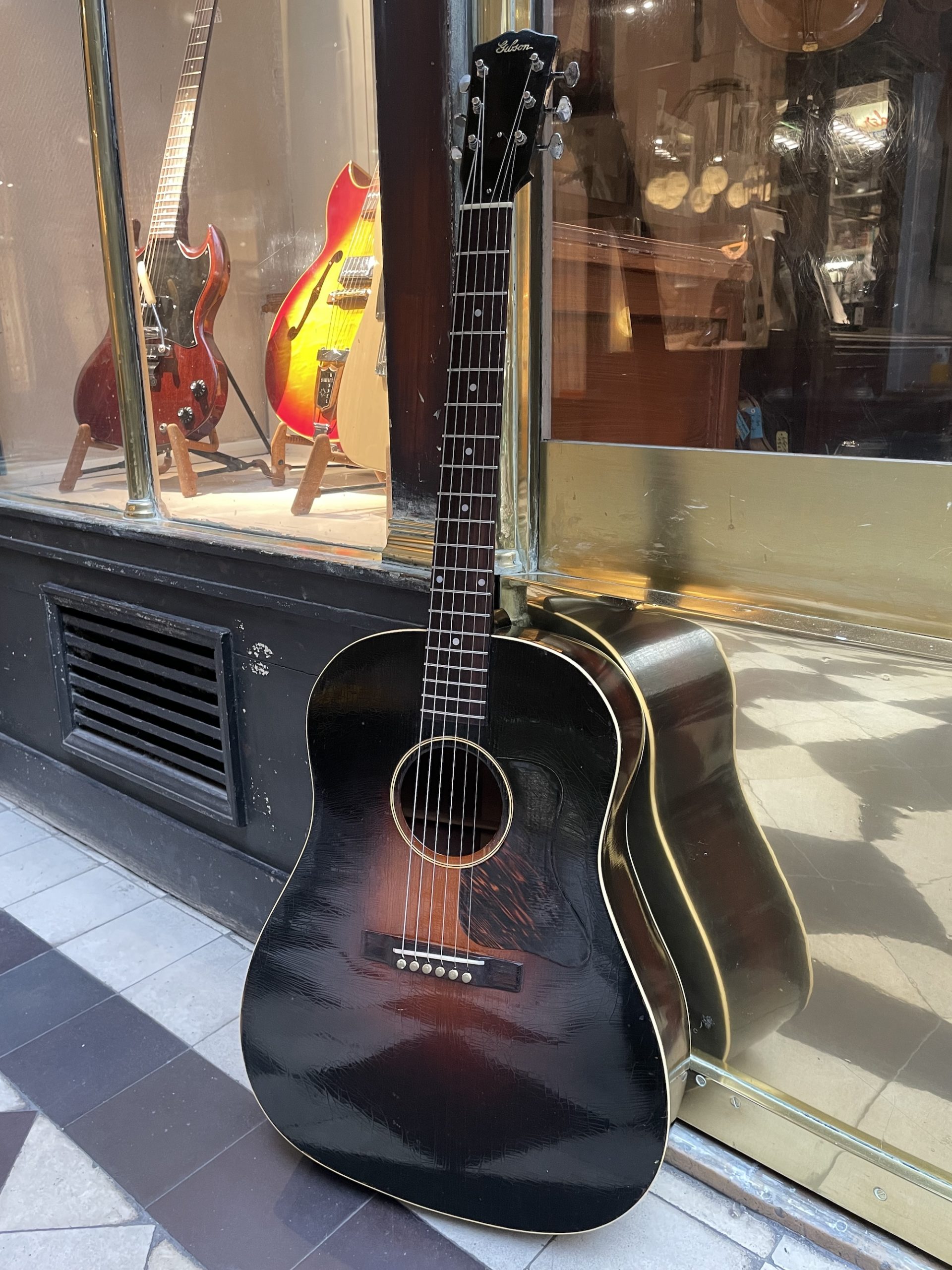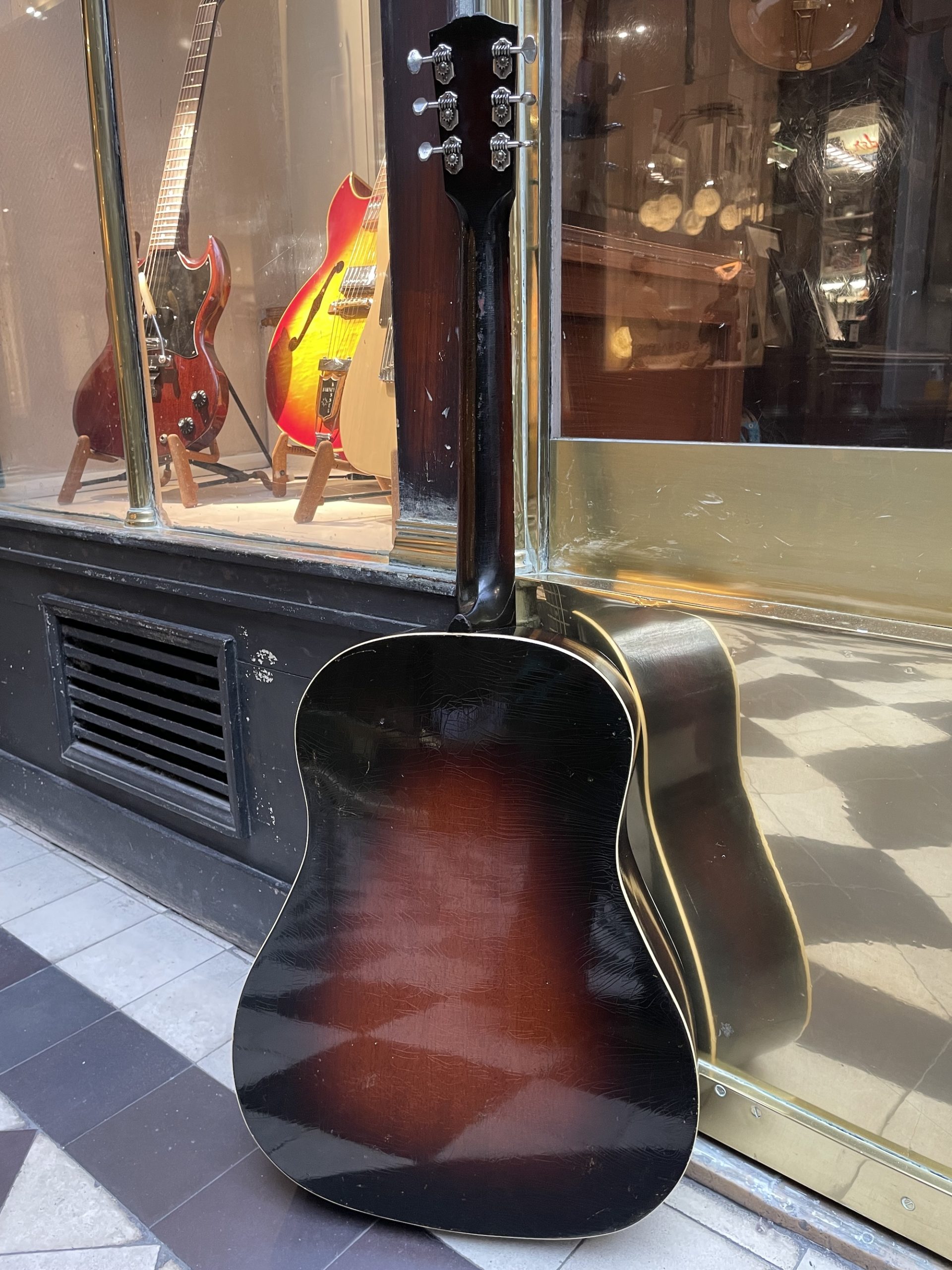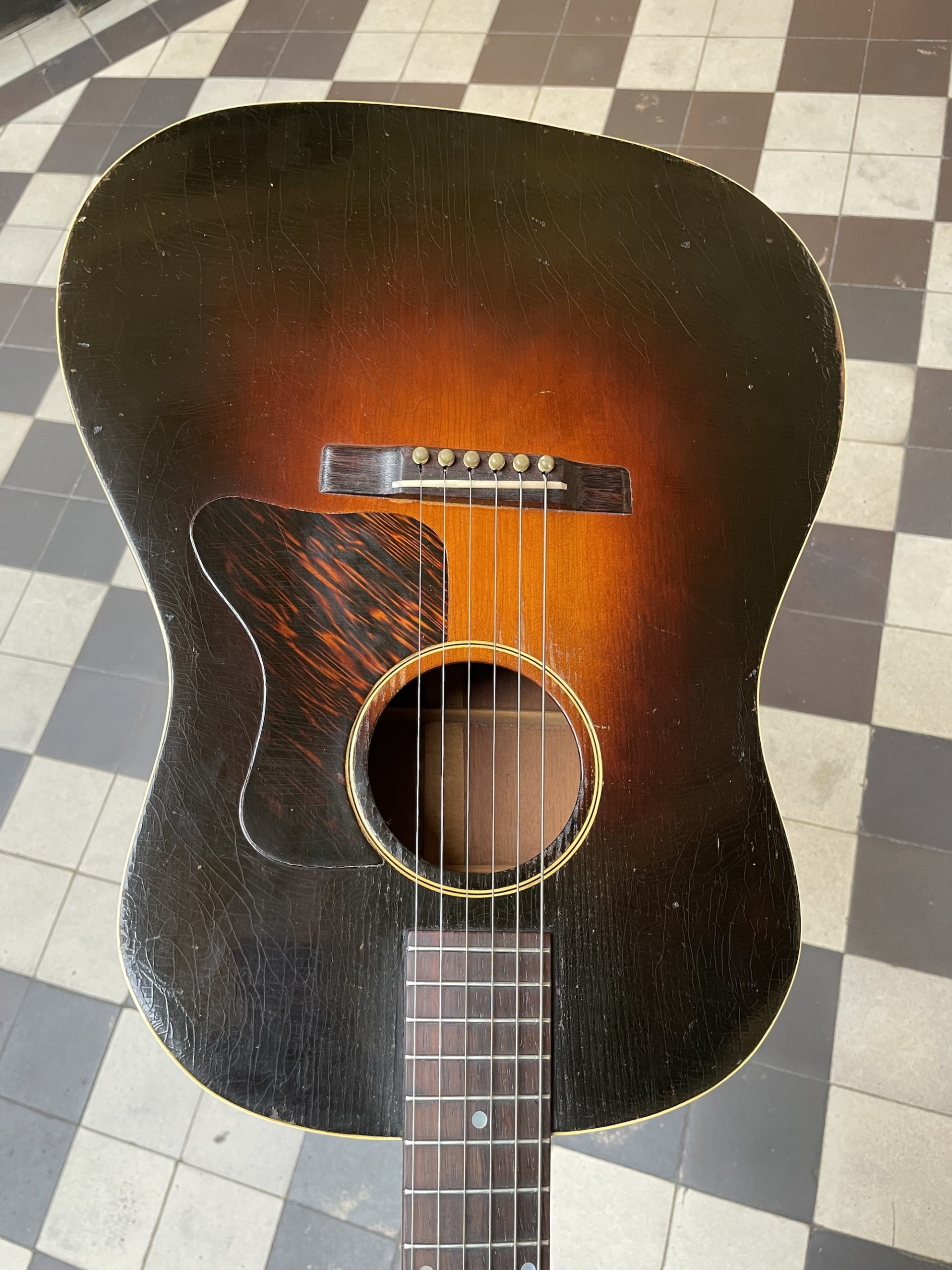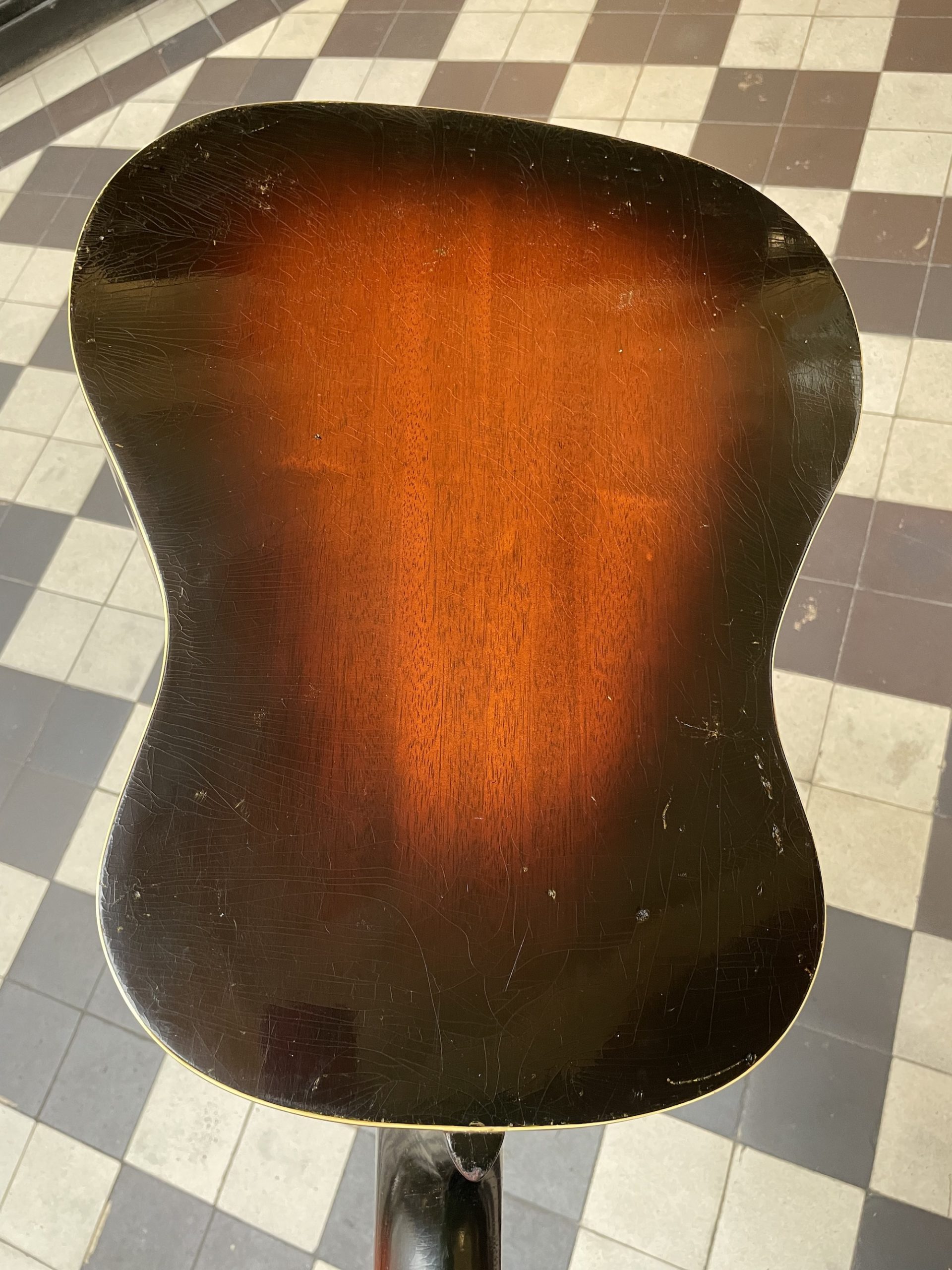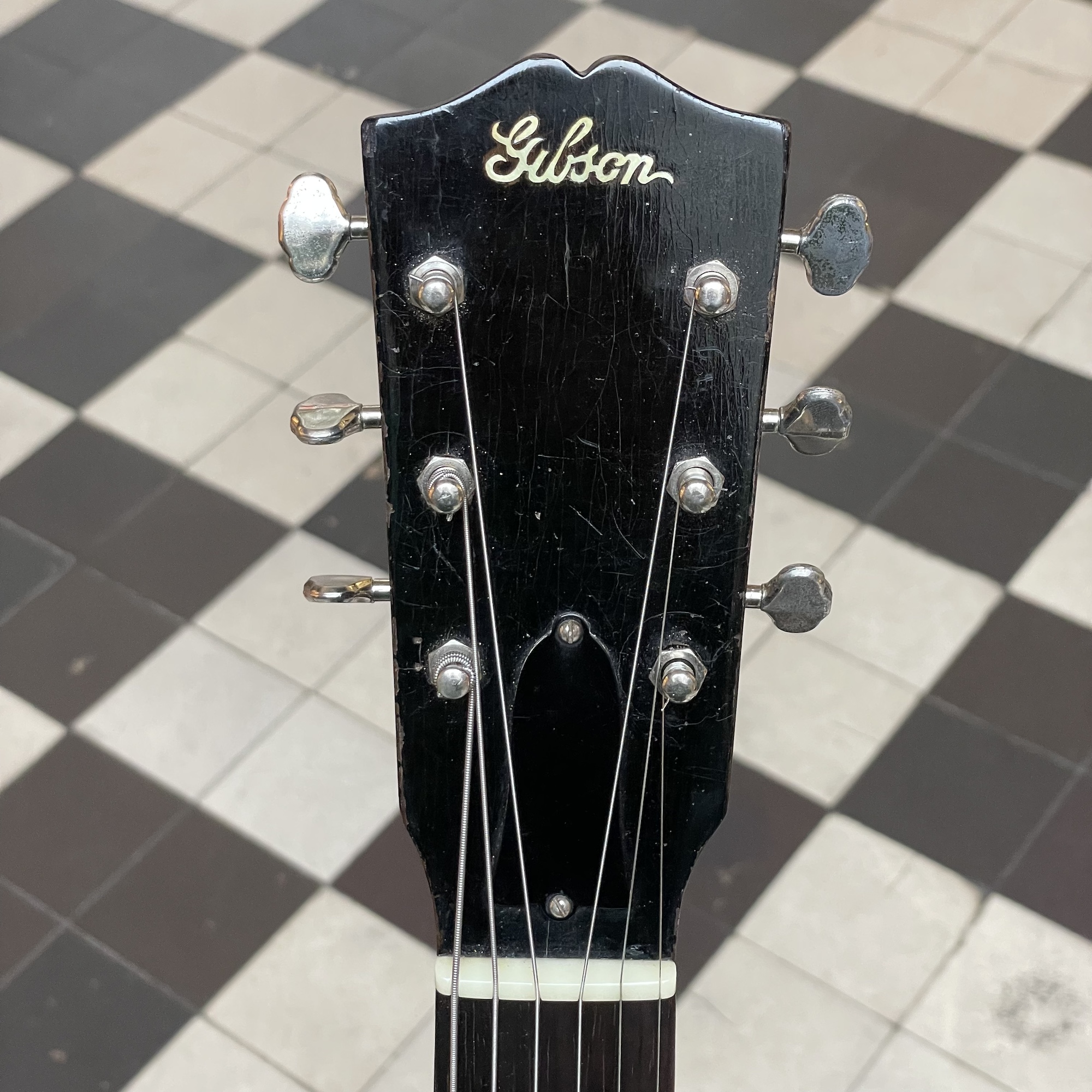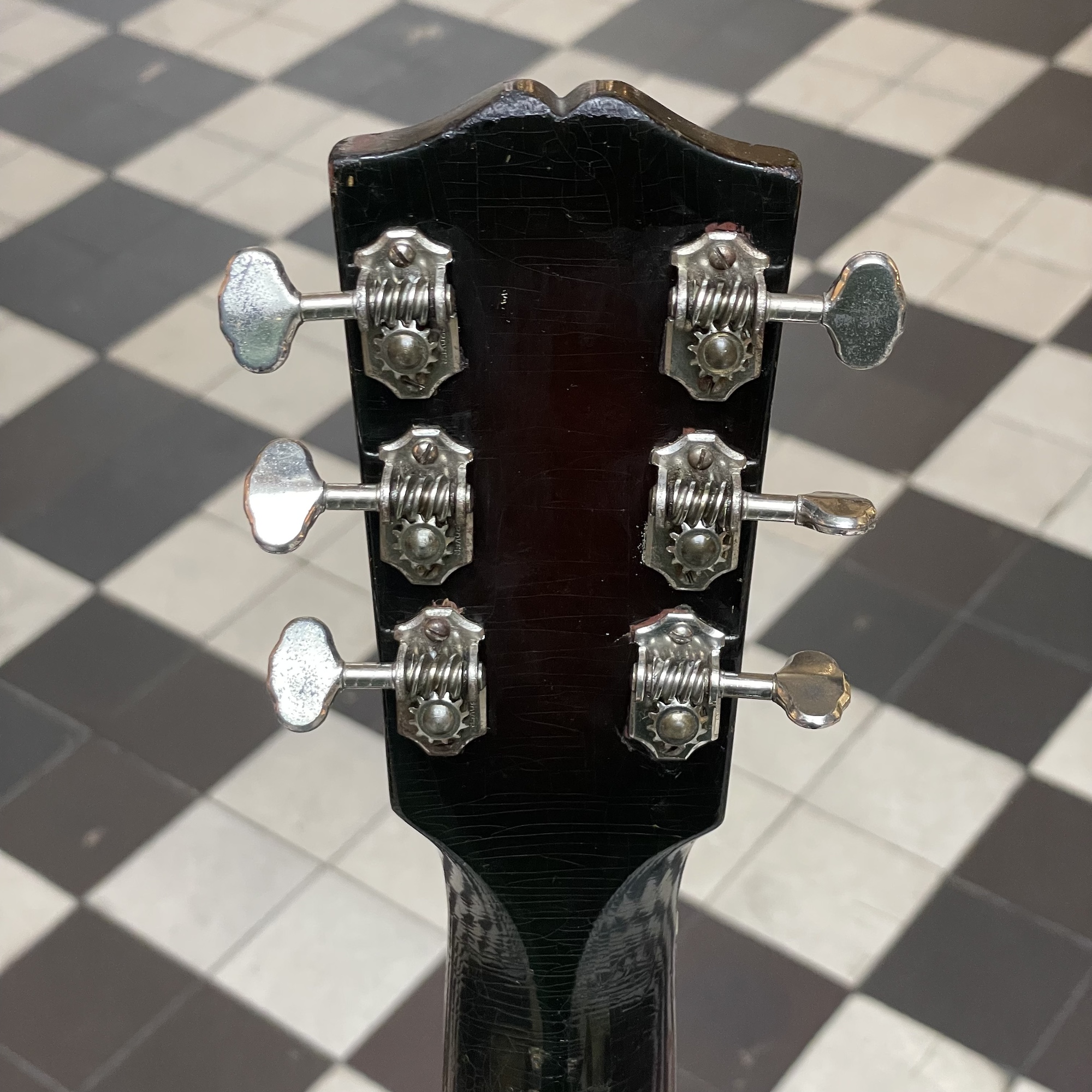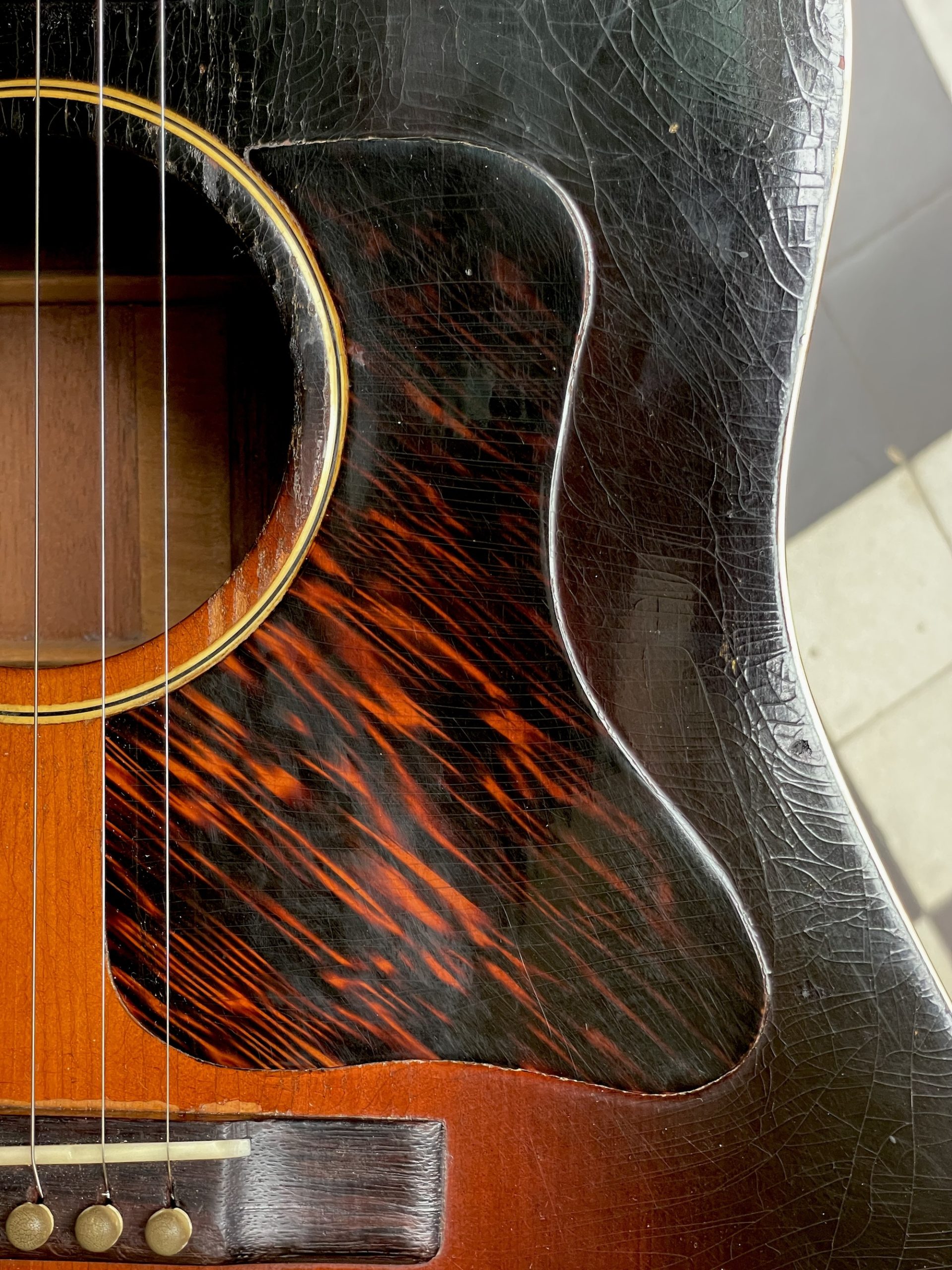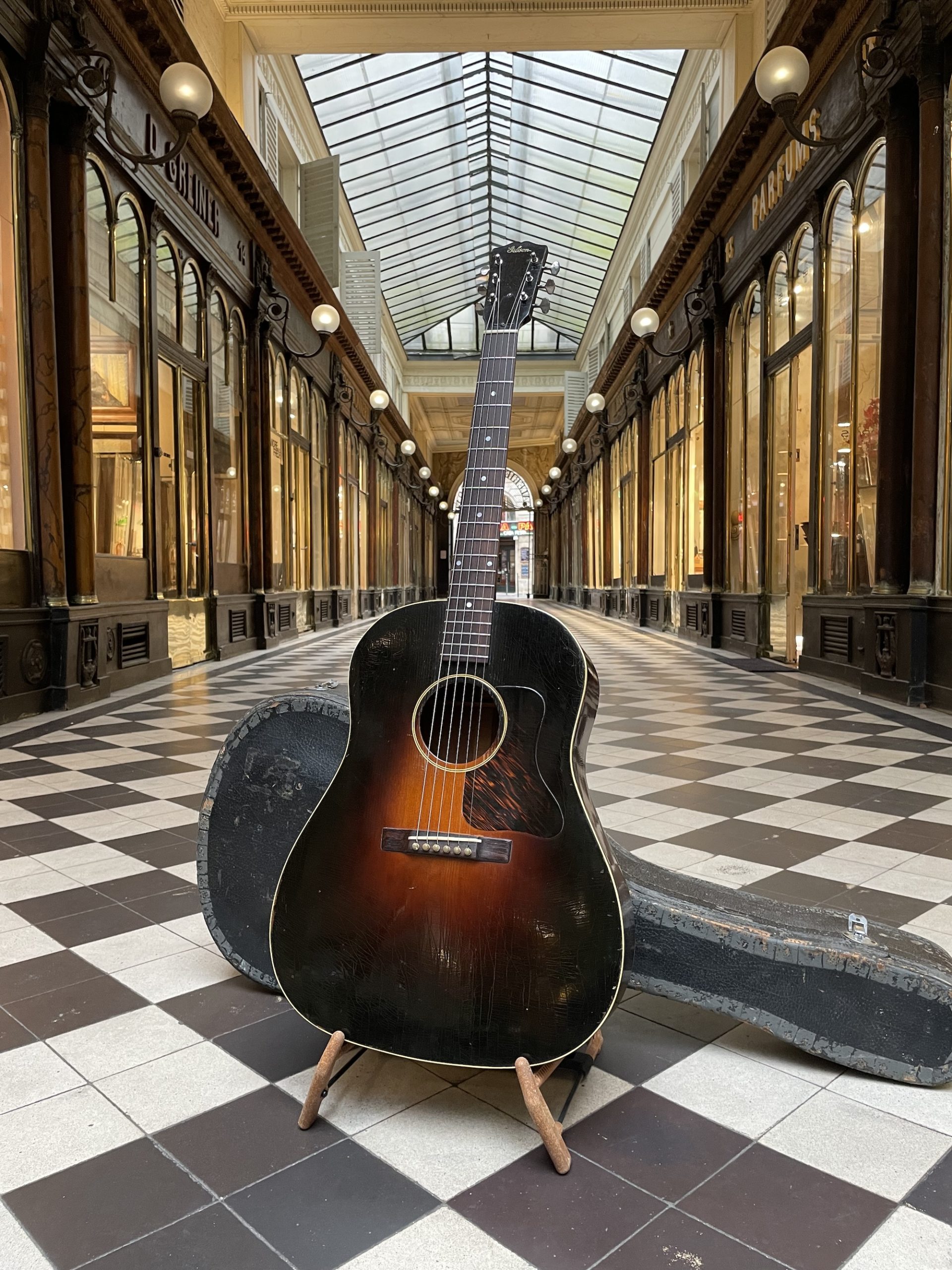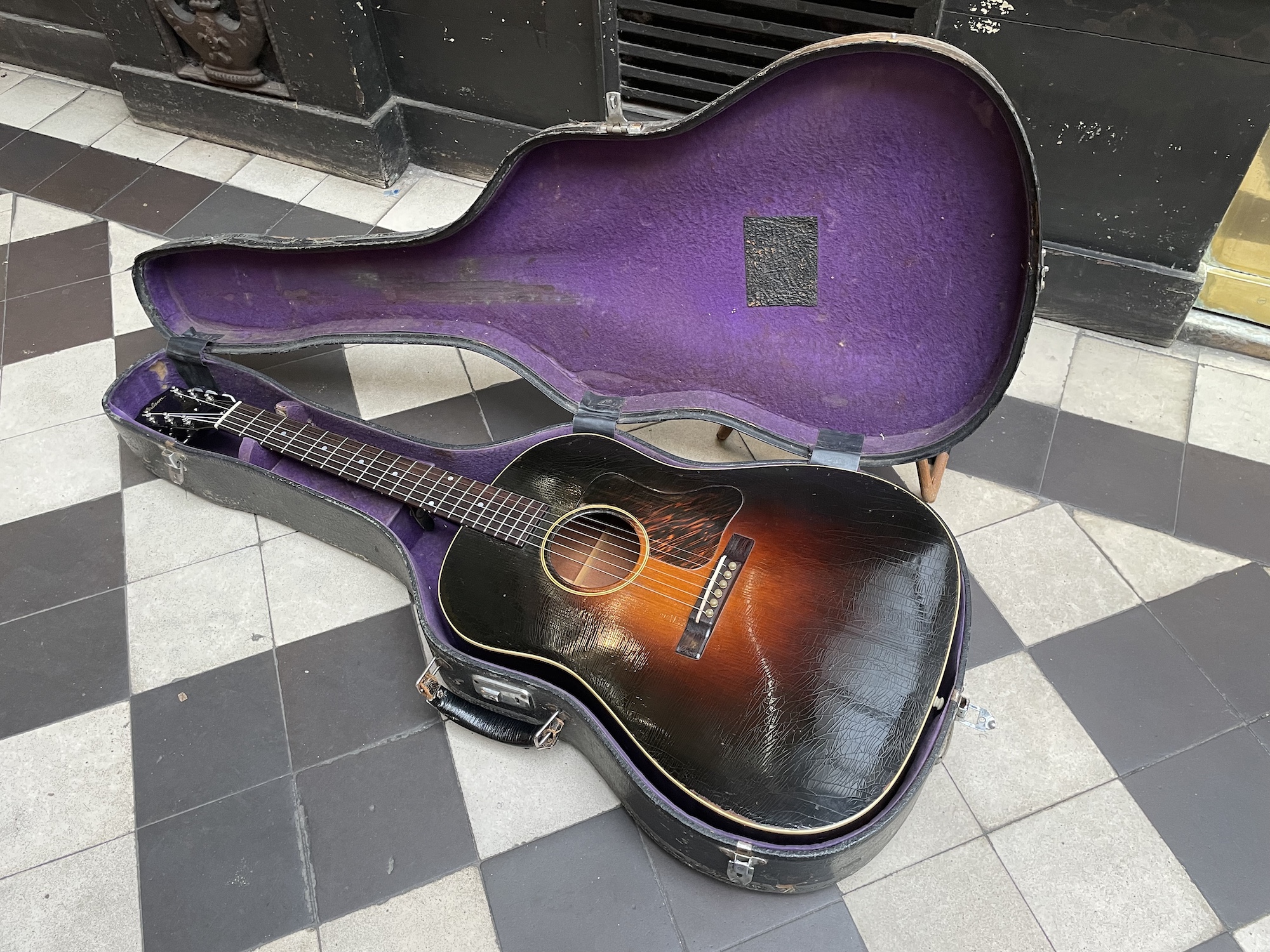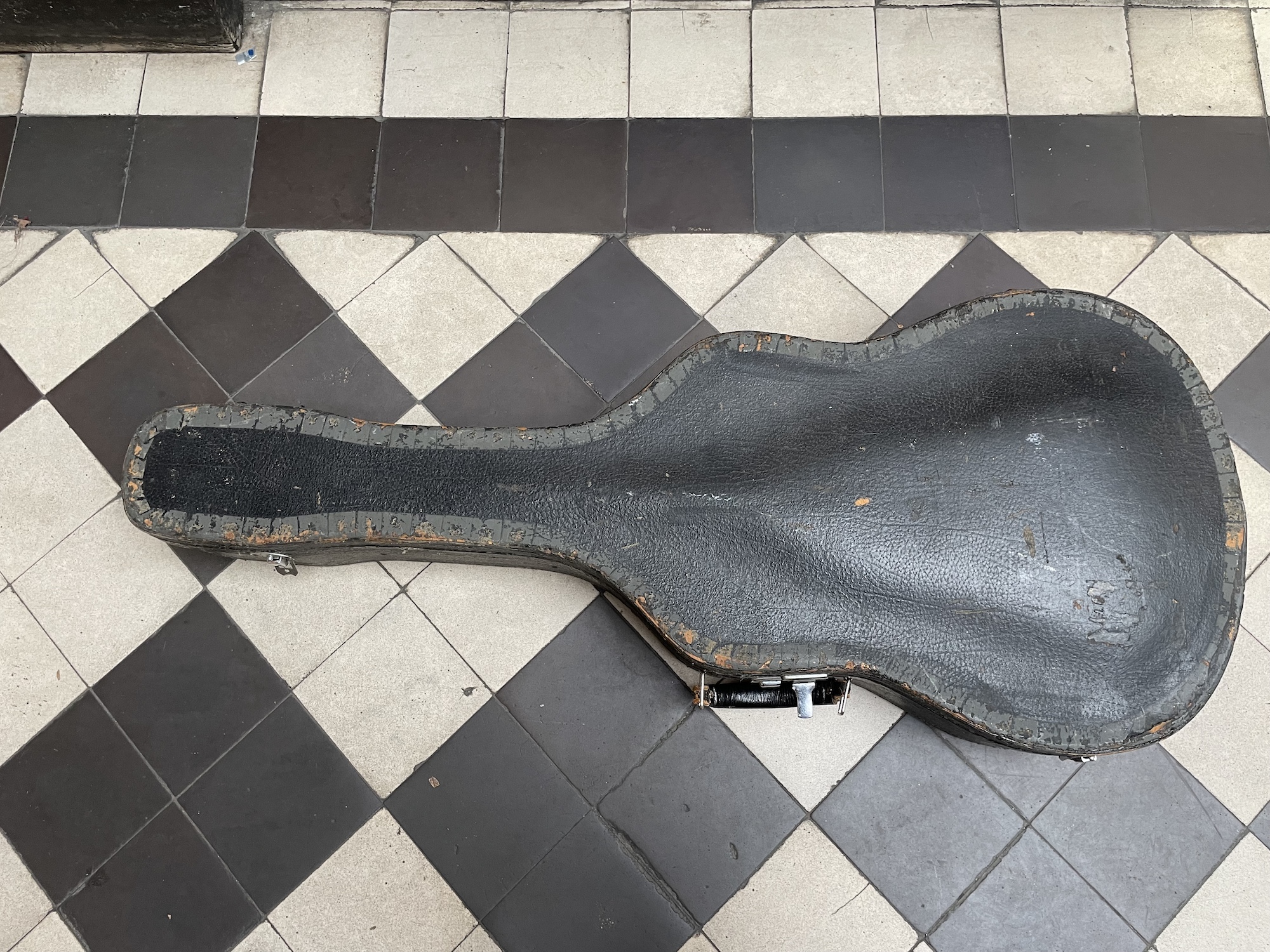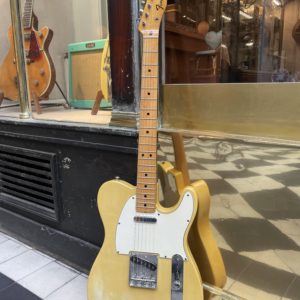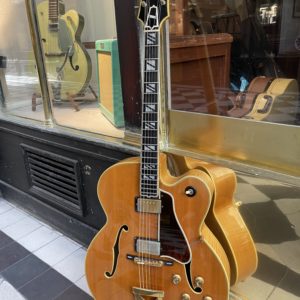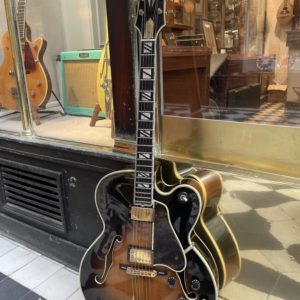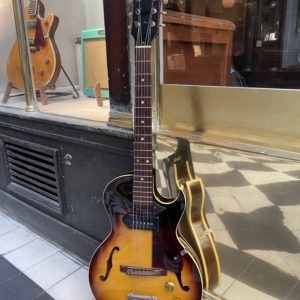1934 GIBSON JUMBO
The prices indicated correspond to the price in the case of payment in-store or by bank transfer. In the case of payment by credit card via the website, a processing fee of [3.25% + €0.25]* will be applied to the total amount of the basket, including delivery costs.
Exceptional Gibson Jumbo from 1934, in superb condition.
We stand at the genesis of a genre. Before the J-200, before the J-45 and its Dixieland counterpart the Southern Jumbo, before the legendary Advanced Jumbo, at the origin of this entire line of flat-tops which stand among the most popular models of all time, there was this guitar. Coming from the first year of production, this Jumbo represents a real turning point for Gibson: the manufacturer, already firmly established in their production of mandolins, banjos and archtop guitars, had until then confined their offering of flat-top guitars to a small-bodied line of instruments consisting of the L-0, L-1, Nick Lucas Special, L-2, L-00 and L-Century, in order of introduction. However, over in Pennsylvania, Martin had given birth in previous decades (notably in their production for the Ditson brand) to a new breed of guitar, called dreadnought and exceeding in all its forms the traditional dimensions of the flat-top, a format materialized in 1931 in the form of the now anthological models that are the D-18 and the D-28. Faced with the immediate success of Martin’s dreadnoughts, Gibson’s response was not long in coming (even if 3 years is a long time to leave the field open to your competitor!). Their new Jumbo model appeared on a full page in the 1934 catalog, with a relatively modest description compared to the usual exorbitance of Gibson’s promotional material: “The new Jumbo guitar is 1 1/4″ wider, 1″ longer and 1/2″ deeper than ordinary flat-top and back guitars. This greater body size produces a heavy, booming tone so popular with many players who do vocal or small combination accompaniment for both personal and radio appearances. The bass of this model will amaze you, and of course the clear and brilliant treble is in perfect balance.” We were unable to go against this account from the first chords struck and the first notes played on the instrument – there is something singularly captivating in the sound of these old Gibsons, which flatters the ears at just the right frequencies and keeps us in the waiting for a song telling some old time tale.
The Jumbo has a classic construction with a spruce top, mahogany back, sides and neck, with the particularity that all of these elements have a Sunburst finish. We also find a mother-of-pearl Gibson logo inlaid on the headstock, an pickguard featuring the firestripe pattern which is a strong visual marker of guitars of the period, and the original Grover G-98 tuners, as well as the fingerboard and bridge made from splendid Brazilian rosewood. The model presented here did not last long in this form: with the economic crisis in full swing at the time of its introduction, its initial price of 60 dollars was simply out of reach for a large part of the American public, and Gibson, recognizing this state of affairs, subdivided the original Jumbo into two other guitars in 1936: on the one hand, the Jumbo 35 or J-35, an economical model with, among other things, a Sunburst on the top only, simpler appointments and a non-scalloped bracing, which made it possible to reduce the construction time and therefore the cost – this J-35, sold for 37 dollars and 50 cents in 1937, was perfectly adapted to the economic reality of the 1930s. On the other hand we have the Advanced Jumbo, a luxurious model richly decorated with mother-of-pearl inlays, and with rosewood back and sides – in short, a guitar to compete with Martin’s D-28, with all the visual excess typical of Gibson instruments contrasting with the austere guitars from the Nazareth builder. All in all, it is ironic to note that the Jumbo, the first expression of the wide-body Gibson flat-top, was held away from the limelight even among the most fervent aficionados of the genre, and this entirely due to the era which saw its introduction and which did not allow it to take off, limiting its production to extremely small numbers. Under better auspices and with time on its side, who can tell in which hands the Jumbo could have achieved the fame it so richly deserves?
The guitar comes to us today superbly preserved, with just the right amount of varnish crackling. After a neck-reset and complete setup carried out in our workshop, as well as a new bone nut and saddle (the original parts are stored in the case), it is perfectly adjusted for playing with low action and great intonation. The original Faultless hardshell case completes the set, leaving us with a superb time capsule of this moment of paramount importance in Gibson history.
SOLD


